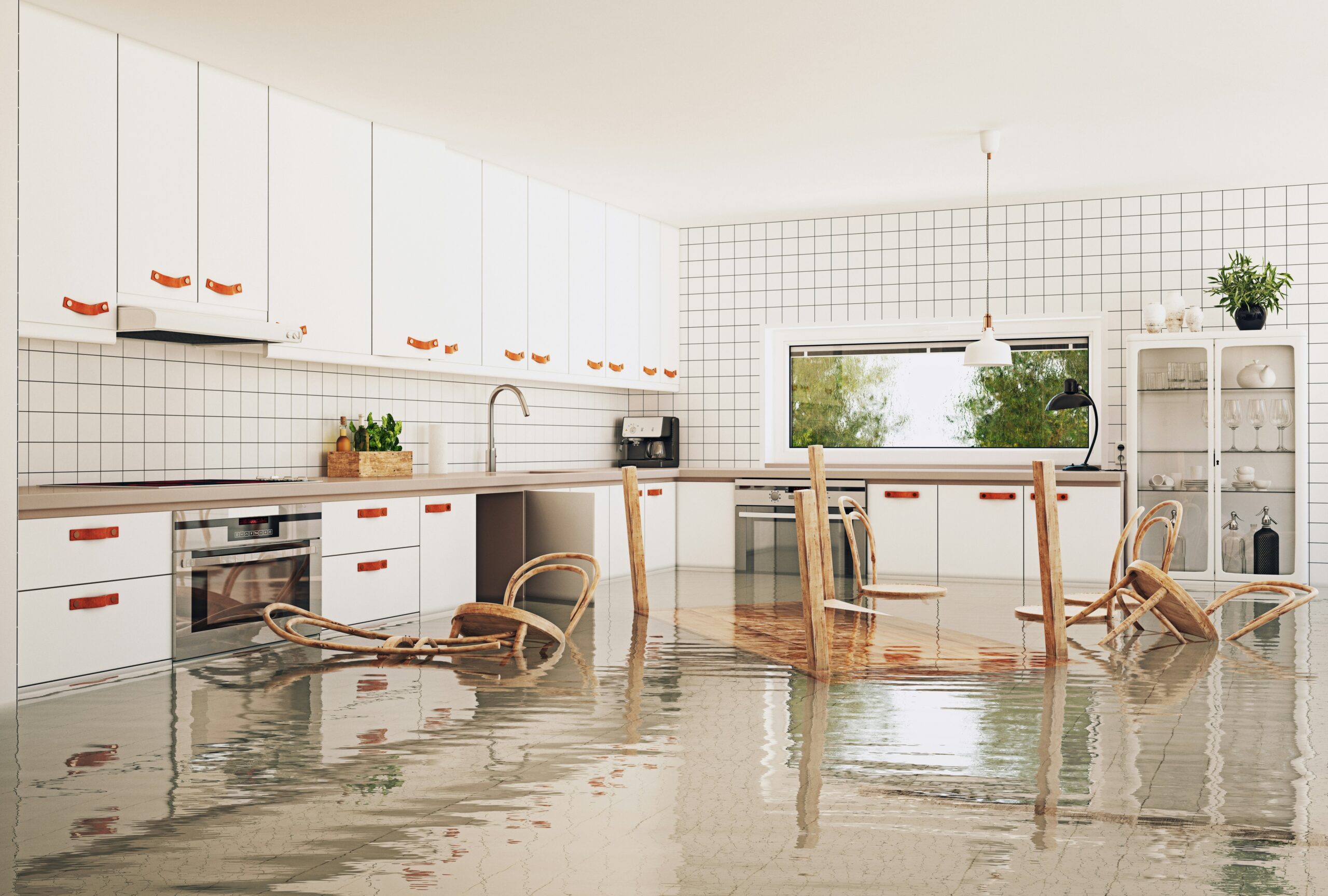Whether you’re temporarily relocating, renovating, or waiting for new tenants to move in, leaving your property unoccupied can expose it to various hazards, including water damage.
Here, we’ll explore how Unoccupied Property Insurance can serve as a vital shield and financial protection against water-related incidents.
From burst pipes to leaks and floods, we’ll explore practical strategies and cover options to help you safeguard your investment.
What damage can water wreak on an unoccupied property?
According to the Association of British Insurers (ABI), escape of water damage is one of the most common types of water damage claims with an estimated £1.8 million paid out by insurers for it every day.
Meanwhile, flooding reportedly causes £1.3 billion of damage annually, according to the Royal Institution of Chartered Surveyors (RICS).
As such, there can be no doubt that water-related incidents can cause significant damage to properties, particularly unoccupied homes that may not be monitored as regularly as occupied properties.
This can inevitably lead to a host of costly and disruptive issues. Some of the most common types of water damage include:
Flood damage
Flooding from heavy rains, storm surges or burst water mains can inundate the property, causing extensive damage to floors, walls, furniture and belongings.
Floodwaters can also compromise the structural integrity of the building and pose health hazards due to contamination.
Burst or leaking pipes
When pipes freeze, corrode or burst due to pressure buildup, they can release large volumes of water into the property.
This can lead to water seepage, flooding and damage to walls, ceilings, floors and electrical systems.
Leaking roof
Roof leaks caused by damaged flashing or fallen slates can allow water to infiltrate the interior of the property.
Over time, roof leaks can result in water damage to ceilings, insulation and structural components.
Plumbing fixture leaks
Leaks from sinks, toilets and showers can occur when seals deteriorate or connections loosen.
Even small leaks can cause water damage to nearby surfaces, flooring and cabinetry if left unchecked.
Appliance malfunctions
Malfunctions or leaks from appliances, such as fridges and freezers, can cause water damage if not promptly addressed.
Water damage from appliance leaks can affect nearby flooring, walls and cabinetry.
How can Unoccupied Property Insurance mitigate water damage?
Unoccupied Property Insurance can play a crucial role in mitigating water damage by providing financial protection and support for property owners facing such risks.
Here’s how it can help:
Cover for water damage
Most policies include cover for water damage caused by various sources, including burst pipes, leaks, floods and appliance malfunctions.
This cover typically extends to repairing or replacing damaged structures, fixtures and belongings affected by water-related incidents.
Loss of rental income cover
If the property is uninhabitable due to water damage, resulting in a loss of rental income, some policies may provide cover for the income lost during the period of repair or restoration.
Emergency assistance and repairs
Some policies may also offer optional cover for emergency assistance and repairs to address water-related incidents promptly.
This may include cover for emergency plumbing services, water extraction and temporary repairs to prevent further damage to the property.
Legal expenses cover
In situations where legal disputes arise due to water damage – such as disputes with tenants, contractors, or insurance companies – this type of insurance can sometimes include cover for legal expenses.
This can help you to navigate legal proceedings and protect your interests effectively.
How to file an Unoccupied Property Insurance claim for water damage
Notify your insurance provider
As soon as you discover any water damage or suspect a water-related incident has occurred in your unoccupied property, notify your insurance provider promptly.
Many insurance policies have specific timeframes for reporting claims, so it’s essential to inform your insurer as soon as possible to avoid any delays or complications.
Document the damage
Before beginning any cleanup or repairs, document the extent of the water damage thoroughly.
Take photographs or videos of the affected areas, including any visible signs of water intrusion, structural damage or damage to belongings.
Keep records of any relevant documents, such as receipts for emergency repairs or mitigation efforts.
Mitigate further damage
Take immediate steps to mitigate further damage to the property to the best of your ability.
This may include shutting off the water supply (if the source of the water damage is a burst pipe or appliance leak), removing excess water using pumps or wet vacuums, and drying out affected areas with fans or dehumidifiers.
Contact the emergency services if necessary
If the water damage poses a significant risk to the property or occupants’ safety, such as flooding or structural instability, contact the emergency services, such as the fire service or a water damage restoration company, for assistance.
Their prompt response can help prevent further damage and ensure the safety of the property.
File a claim
Once you’ve notified your insurance provider and documented the damage, you can begin the process of filing a claim.
Contact your insurer’s claims department to initiate the claim filing process. Be prepared to provide detailed information about the water damage incident, including when it occurred, the cause, and the extent of damage.
Cooperate with the Claims Adjuster
Your insurance company may send a Claims Adjuster to assess the damage and investigate the circumstances surrounding the water damage incident.
Be sure to cooperate fully with the claims adjuster, providing access to the property and any documentation or evidence related to the claim and be prepared to answer their questions.
Keep records of all communication
Throughout the claims process, keep detailed records of all communication with your insurance provider, including phone calls, emails and all written correspondence.
Take note of any instructions or requirements provided by your insurer and follow them carefully to ensure the timely processing of your claim.
Review and finalise the claim
Once the Claims Adjuster has completed their assessment and investigation, your insurance provider will review the information and determine the cover and settlement amount for your claim.
Review the settlement offer carefully and ensure it adequately covers the costs of repairing the water damage to your unoccupied property.
If you agree with the settlement terms, you can finalise the claim and receive your compensation.
By following these steps and working closely with your insurance provider, you can navigate the claims process for water damage effectively and secure the necessary support to restore your property to its pre-damaged condition.
Get Unoccupied Property Insurance with UKinsuranceNET
Water-related incidents can wreak havoc on an unoccupied house, leading to costly repairs, property damage and health hazards.
It is essential to take preventive measures and ensure you have adequate cover in the form of Unoccupied Property Insurance to mitigate the substantial financial risks associated with water damage.
If you need insurance for an unoccupied house, get an instant online quote at UKinsuranceNET now.







